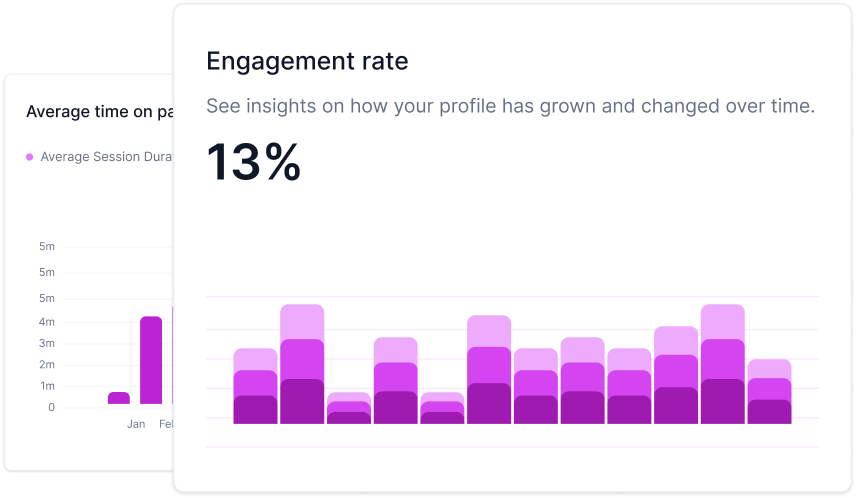What is the Cost-Per-Acquisition (CPA)?
Cost-Per-Acquisition (CPA) is an online advertising pricing model where advertisers pay a fee only when a specific action, such as a purchase, sign-up, or form submission, is completed as a result of their ad. It focuses on measuring the cost of acquiring a customer or lead, making it a performance-driven model that aligns with specific conversion goals.
In the realm of digital marketing, navigating the various pricing models can be a game-changer for your advertising strategies. One such model, Cost-Per-Acquisition (CPA), is a key player when it comes to performance-driven advertising. In this article, we'll explore CPA, addressing three fundamental questions that can help you harness its power effectively.
What is Cost-Per-Acquisition (CPA), and How Does It Differ from Other Advertising Pricing Models like CPM and CPC?
Cost-Per-Acquisition (CPA) is an advertising pricing model where advertisers pay only when a specific action is completed as a result of their ad, such as a purchase, form submission, or sign-up. This model stands in contrast to other popular pricing models like Cost-Per-Mille (CPM) and Cost-Per-Click (CPC).
To understand the differences, let's briefly touch on these models:
- Cost-Per-Mille (CPM): CPM focuses on impressions; advertisers pay for every 1,000 times their ad is displayed, regardless of whether users take any action. It's often used for brand awareness.
- Cost-Per-Click (CPC): CPC charges advertisers each time a user clicks on their ad. It's performance-oriented, targeting users who actively engage.
CPA, on the other hand, emphasizes a specific action or acquisition. Advertisers pay when a user completes a predefined goal, making it ideal for campaigns focused on conversions, such as sales or lead generation. It ensures that you pay for tangible results.
How Can I Optimize My CPA Campaigns to Reduce Acquisition Costs and Improve the Overall Efficiency of My Marketing Efforts?
Optimizing CPA campaigns requires a strategic approach to make your advertising investment more cost-effective. Here are some strategies to consider:
- Audience Targeting: Precisely define your target audience based on demographics, interests, and behaviors. This helps ensure that your ads reach users who are more likely to complete the desired action.
- Compelling Ad Creative: Create engaging and relevant ad creatives that resonate with your audience. High-quality visuals, persuasive copy, and a clear call to action can significantly impact conversion rates.
- Landing Page Optimization: Ensure that the landing page users arrive at after clicking the ad is well-designed and directly related to the ad's message. A seamless user experience can boost conversions.
- A/B Testing: Continuously test different ad variations to identify what resonates best with your audience. Experiment with ad copy, imagery, and ad placement to find the winning combination.
- Budget Management: Monitor and adjust your advertising budget based on the performance of your CPA campaigns. Allocate more resources to well-performing campaigns and scale back on those with higher acquisition costs.
- Conversion Tracking: Implement reliable conversion tracking to measure the success of your CPA campaigns accurately. Tools like Google Analytics can help you gather data on user actions.
What Are Typical CPA Benchmarks for My Industry, and How Do I Know If My CPA Is Competitive and Aligns with My Business Goals?
Determining whether your CPA is competitive and aligns with your goals involves benchmarking against industry standards and evaluating your campaign's performance. Here's how to approach this:
Industry Benchmarks: Typical CPA benchmarks can vary widely depending on the industry, type of action, and target audience. It's advisable to research industry-specific benchmarks, which can provide a general guideline for what's considered competitive.
Campaign-Specific Goals: Your CPA should align with your campaign objectives and business goals. It's essential to set clear goals for each campaign, whether it's generating leads, driving sales, or promoting brand awareness.
Regular Evaluation: Continuously monitor your CPA campaigns and analyze key performance metrics, such as conversion rates, cost per conversion, and return on investment (ROI). This data will help you assess the competitiveness and alignment of your CPA efforts with your business objectives.
In conclusion, Cost-Per-Acquisition (CPA) advertising is a results-driven pricing model that's particularly effective for campaigns focused on specific actions or acquisitions. Understanding its differences from other models, optimizing your CPA campaigns, and benchmarking them against industry standards are key to harnessing the power of CPA and achieving your marketing objectives.

